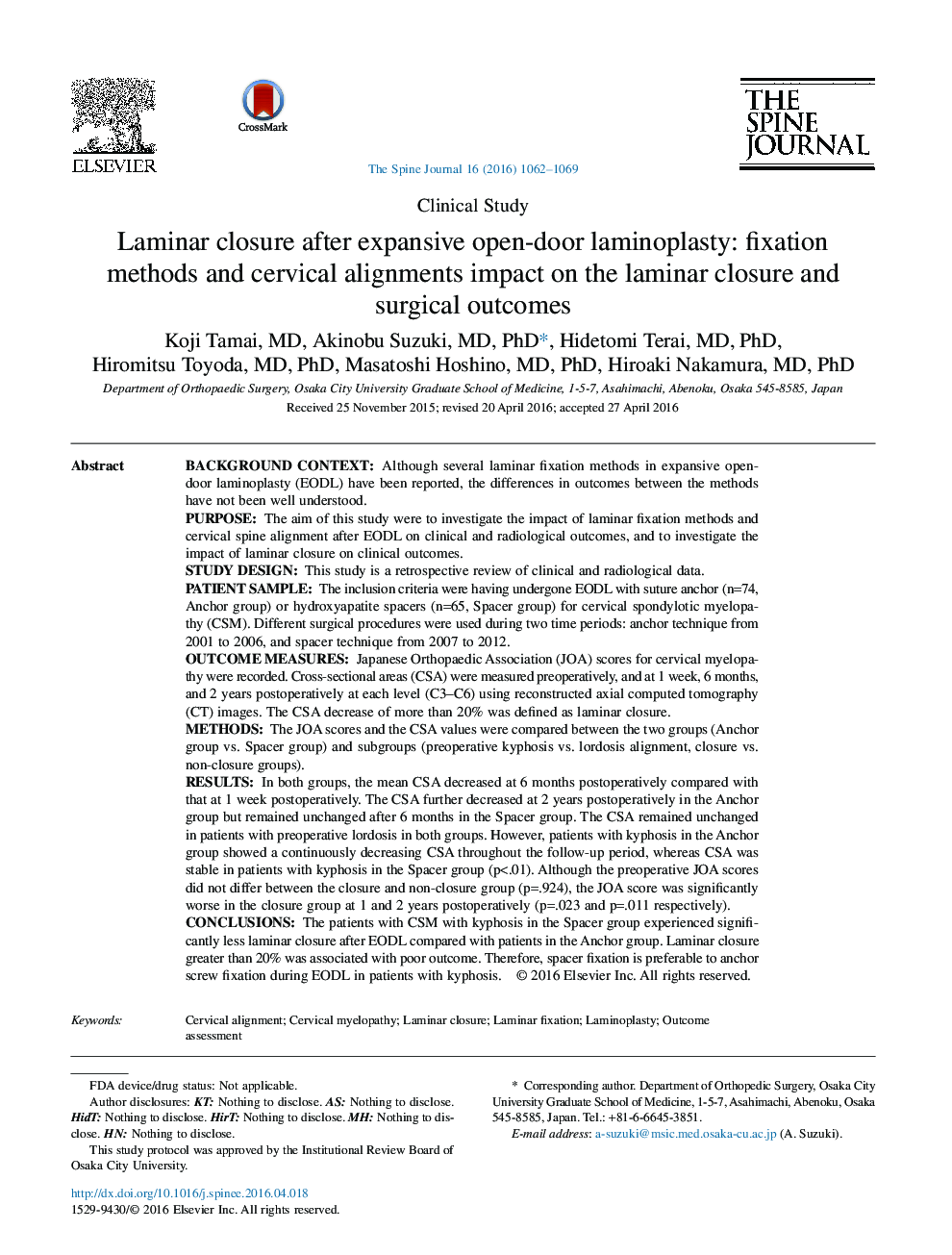| کد مقاله | کد نشریه | سال انتشار | مقاله انگلیسی | نسخه تمام متن |
|---|---|---|---|---|
| 4095725 | 1410993 | 2016 | 8 صفحه PDF | دانلود رایگان |
Background ContextAlthough several laminar fixation methods in expansive open-door laminoplasty (EODL) have been reported, the differences in outcomes between the methods have not been well understood.PurposeThe aim of this study were to investigate the impact of laminar fixation methods and cervical spine alignment after EODL on clinical and radiological outcomes, and to investigate the impact of laminar closure on clinical outcomes.Study DesignThis study is a retrospective review of clinical and radiological data.Patient SampleThe inclusion criteria were having undergone EODL with suture anchor (n=74, Anchor group) or hydroxyapatite spacers (n=65, Spacer group) for cervical spondylotic myelopathy (CSM). Different surgical procedures were used during two time periods: anchor technique from 2001 to 2006, and spacer technique from 2007 to 2012.Outcome MeasuresJapanese Orthopaedic Association (JOA) scores for cervical myelopathy were recorded. Cross-sectional areas (CSA) were measured preoperatively, and at 1 week, 6 months, and 2 years postoperatively at each level (C3–C6) using reconstructed axial computed tomography (CT) images. The CSA decrease of more than 20% was defined as laminar closure.MethodsThe JOA scores and the CSA values were compared between the two groups (Anchor group vs. Spacer group) and subgroups (preoperative kyphosis vs. lordosis alignment, closure vs. non-closure groups).ResultsIn both groups, the mean CSA decreased at 6 months postoperatively compared with that at 1 week postoperatively. The CSA further decreased at 2 years postoperatively in the Anchor group but remained unchanged after 6 months in the Spacer group. The CSA remained unchanged in patients with preoperative lordosis in both groups. However, patients with kyphosis in the Anchor group showed a continuously decreasing CSA throughout the follow-up period, whereas CSA was stable in patients with kyphosis in the Spacer group (p<.01). Although the preoperative JOA scores did not differ between the closure and non-closure group (p=.924), the JOA score was significantly worse in the closure group at 1 and 2 years postoperatively (p=.023 and p=.011 respectively).ConclusionsThe patients with CSM with kyphosis in the Spacer group experienced significantly less laminar closure after EODL compared with patients in the Anchor group. Laminar closure greater than 20% was associated with poor outcome. Therefore, spacer fixation is preferable to anchor screw fixation during EODL in patients with kyphosis.
Journal: The Spine Journal - Volume 16, Issue 9, September 2016, Pages 1062–1069
